1967 Alfa Romeo Gran Sport Zagato Quattroruote
At first glance it’s a 1930s Alfa 6 roadster. But looks deceive. Massimo Delbo unravels a very special project from the. 1960s, built by Alfa Romeo and Zagato.
Photography Max Serra
THE YOUNG PRETENDER
Official 1960s Alfa homage to a 1930s 60
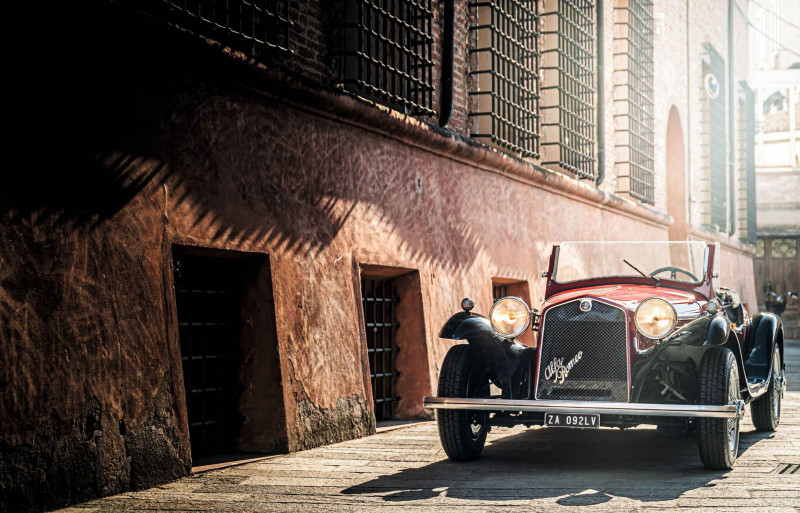
In 1965 the car market was booming worldwide. Manufacturers of every nation were introducing new models at an unprecedented rate. So were coachbuilders, and most of those were Italian. The Zagato stand at that year’s Turin motor show was a perfect example, crowded with seven cars, representing the different models built by this small, niche coachbuilder.
It is difficult to imagine a better coachbuilder for the job, as pre-war Alfas often wore a Zagato body’
Yet while six of them remain well-known to this day, even though they were built in comparatively tiny numbers, one is almost forgotten, even among insiders.
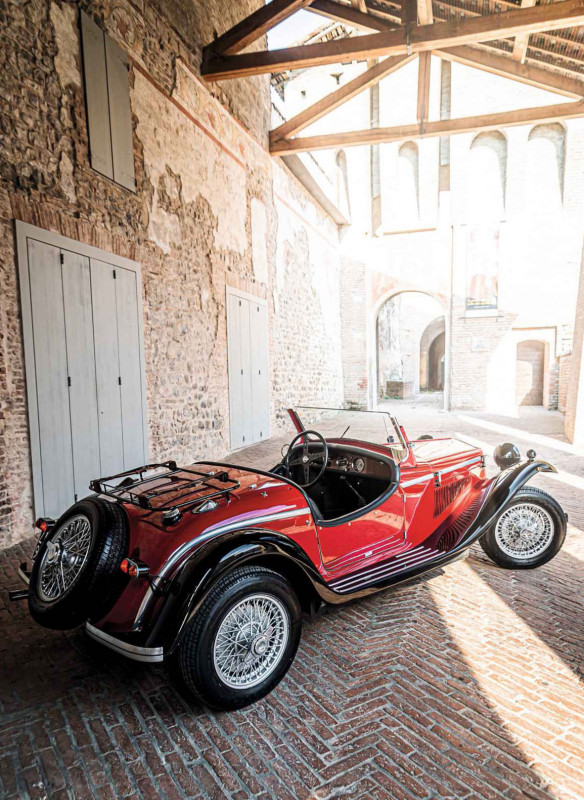
On display for the public to drool over were a specimen of each of the following: Alfa Romeo TZ 2 (12 built), Alfa Romeo 2600 SZ (105), Lamborghini 350 GTZ (just the one, followed by another in 400 GTZ form), Lancia Flaminia SS (199), Lancia Fulvia Sport (202 in its first series with the 1200cc engine), and the relatively common Lancia Flavia Sport (629).
Alfa Romeo’s engineers worked hard to create what they saw as a new model’
And the seventh? Well, you likely don’t remember the Alfa Romeo Gran Sport Quattroruote Zagato. It was manufactured in 92 units, ten of them in right-hand drive, between 1965 and 1967. Its name might help to explain its unusual origins: it was born from the idea of a car magazine publisher, based on the extensively modified mechanical components of an Alfa Romeo 105-series Giulia Spider, and paired with a body inspired by the Alfa Romeo 6C 1750 GS of the 1930s.
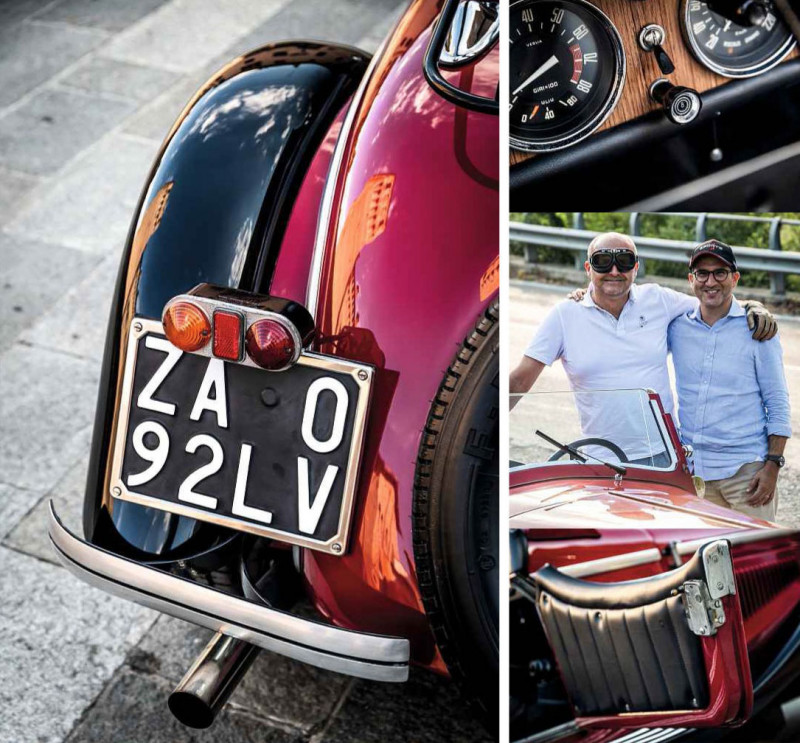
In 1956, the publisher and car enthusiast Gianni Mazzocchi founded the monthly magazine Quattroruote (literally ‘Four Wheels’), on the outskirts of Milan. He was an early collector of classics, among them a 1930s Alfa Romeo 6C 1750 GS bodied by Zagato. And in that he saw inspiration. Aware of how much attention he received while driving his 6C, and its need of specialistcare, he imagined a new model that paired its iconic pre-war roadster look with more modern running gear. It wouldn’t have to be a replica as such, but must simply recall the 6C’s spirit. And he managed to convince Alfa Romeo itself of his great idea.
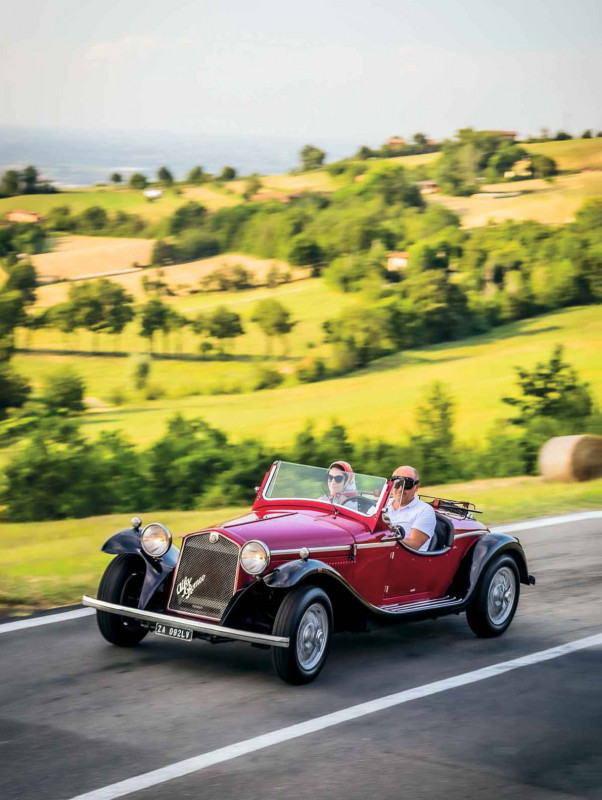
Alfa Romeo’s engineers worked hard to create what they saw as a new model. Incredibly, given the limited foreseen production run, they did not simply prepare a 105-series rolling chassis to be rebodied but developed it much further, lengthening the wheelbase by 350mm (from 2250mm to 2600mm) so the car would look more like the model it was inspired by and to allow the retro- style wings to flow along the side of the car. Then theymodified the steering box, to cope with the longer distance between the steering wheel and the front wheels. They shortened the gear ratios, too, so the car would suit country roads better than the highway. Finally, it needed to handle like an Alfa, so they upgraded the suspension to work better with a car that’s around 700kg lighter.
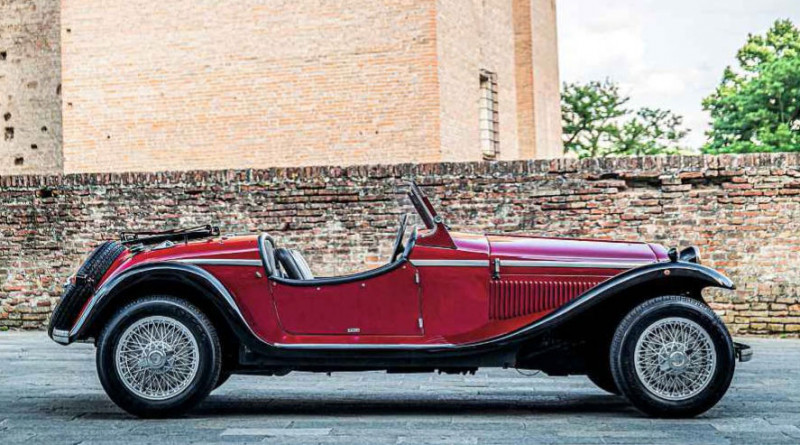
‘These main technical features of the Quattroruote, as it is known today by the cognoscenti, prove that the development of this special car had to fulfil all the requirements of a regular production model,’ says Paolo Di Taranto, heritage consultant at Zagato and the owner of the car you see here. ‘A lot of time, and kilometres, were spent by Alfa Romeo in Arese to achieve perfect roadholding. Not only that, but having read the reports from the period, Alfa Romeo testers went the extra mile and did their best to add the same sort of feeling that driving the original 6C would have provided.’
To complete the project, Carrozzeria Zagato was tasked with creating the body — importantly, the car maintained its unitary body construction. It is difficult to imaginea better coachbuilder for the job, as pre-war Alfas often wore an Ugo Zagato-designed body, and Zagato was based around Milan, as was Alfa Romeo — Quattroruote still is. All of that added local heritage, celebrating the first Italian city to embrace the automobile, well before Turin. Zagato created a wonderful shape, following the original concept but not copying it.
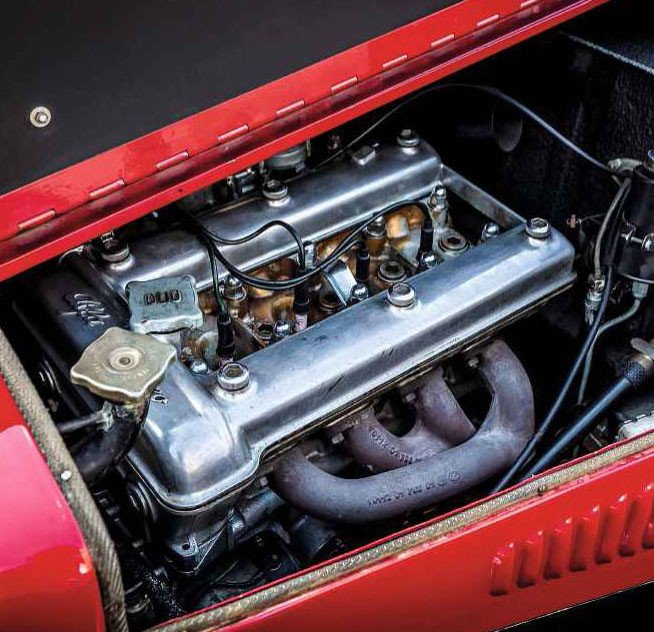
‘The period documents are all very clear about what the “Gran Sport Quattroruote” should be,’ says Di Taranto. ‘Not a clone, a fake, a recreation of the 1930s 1750, but a reproportioned design, inspired by the original forms.’
Elio and Gianni Zagato handed the job to Ercole Spada, then in charge of Zagato styling. His major difficulty was merging two different needs: the interior width of the Giulia Spider and the long and narrow external fenders inspired by the 6C. They had to reduce the cabin width from 1240mm to 980mm to avoid making the car too broad, and then worked on the windshield height and rake. You won’t be surprised to hear that the Quattroruote’s cockpit is on the snug side.

To help with the period look, Zagato and Alfa Romeo made just one technical concession to the past: they equipped the car with drum brakes, instead of the discs found on the Alfa 105, which would have looked too modern when seen behind the wire wheels. The logos on the car are a mix of styles, each one — Alfa Romeo, Zagato and Quattroruote — keeping their original brand's font.
How serious the project was is further underlined by planned distribution, with the car presented in the official Alfa Romeo price list, available all over the world (and in right-hand drive) through the Alfa dealer network and covered by the company’s warranty. It was priced in Italy from 2,360,000 lire, or $4950 in the USA. For reference, that sat it above the new-for-1966 Alfa Romeo Duetto.
‘The Quattroruote was not a cheap kit car, it was an unusual new model, manufactured and homologated in a serious way as per Alfa Romeo Standards,’ says Di Taranto. ‘It was the kind of car that buyers would love to make unique, and so requests for personalisation were strong. The range of available colour combinations, either single or dual, was already wide, and we know of cars originally painted in “on request” colours, as well as special interior finishes, a rear luggage rack and so on.’
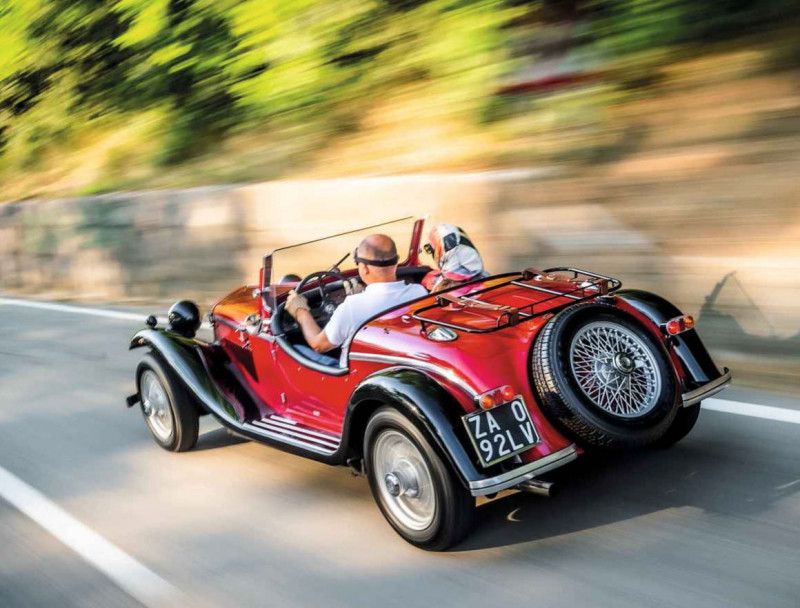
Its impact was immediate, especially as a publicity tool. The car was pictured on the cover of the May 1965 edition of Quattroruote, followed by a full test drive in its August 1966 issue, and it even appeared on record covers, including famous Italian musicians such as Adriano Celentano (iZ Molleggiato or ‘the springy one’, thanks to his dancing style), Don Bachi and Franco Califano, while the French pop crooner Antoine took personal delivery of his at the Zagato atelier. It hit the world of fantasy as well, becoming the preferred car in comic strips including Lupin and Margot.
It is difficult today to decide whether the Quattroruote was a true commercial success, as rolling chassis availability from Alfa Romeo was limited by the introduction of the Spider Duetto. A total of fewer than 100 cars could be considered a failure, especially in mass production terms, but it’s quite a decent number for a special edition such as this, considering that the offering was originally touted as a few tens of units.
Paolo hands me the key to his Quattroruote. It was sold originally in the Milan area in 1966 and was restored by the third and previous owner five years ago. I’m very curious to find out how it drives; even entering it is not an easy task, as the door opening is small and the car is low, but once you’re in, you are in: the driving position is as per the Alfa Romeo and Zagato tradition, in which handling and ergonomics are essential priorities.

Straight away, looking through the windshield, I notice that the view ahead is exactly the one you have from the 1930s Alfa 6C Zagato, with the long hood and the lights dominating, and that is a wonderful touch. Naturally the controls and the way they feel are typical of a 1960s Alfa, as is the tone of the engine. And when you start to drive, you immediately notice how good that engine is: it is not the power that impresses but the torque and its ability to gain revs when pushing from low speed, especially rewarding and noticeable on this twisty hill road, the perfect environment for this car. Its drum brakes aren’t great, but the car is light and they are powerful enough.
Gearchanges are easy and satisfying, and the roadholding is pure 105-series, with just a moderate delay in answering steering commands. Smoothness and lightness are the key to enjoying this car. I love its twincam engine and how it is tuned, the carburettors never missing a beat and making me wonder if I should use the same guy that prepared this car for my own Alfa Romeo.
The windshield is quite low, just enough to direct the strongest blasts over your head, though it’s worth keeping goggles on as dust hits your face from the sides. There is only a single rear-view mirror, so in traffic you have to focus on engine noise coming from behind, but other drivers are curious about the car and are quite respectful. Making a U-turn on the mountain road is not the easiest task, as the turning circle is broad, but that seems to be the only negative when driving. As for maintenance: ‘It is a normal Alfa Romeo in every way/ says Di Taranto, so from the mechanical side, it is quite easy and does not require more than a tune-up at the beginning of the season and a service every couple of years.’
It would be a very different scenario if you needed body panels — these cars often lived by the sea, were far from collectable in the 1980s and, indeed, were frequently abused. ‘I’ve been lucky and bought a good car, already well-restored by the previous owner. It took me a couple of years to find. But if you crash it, or you need metalwork, you have to remanufacture the parts. Spares are simply not available.’
Well, we might add that that’s exactly what happens when you need a panel for your 1930s Alfa Romeo...
TECHNICAL DATA 1967 Alfa Romeo Gran Sport Zagato Quattroruote
- Engine 1570cc DOHC four-cylinder, Solex 32 PAIA 7 carburettor
- Max Power 92bhp @ 6000rpm
- Max Torque 88lb ft @ 4000rpm
- Transmission Five-speed transaxle, rear-wheel drive
- Steering Recirculating ball
- Suspension Front: double wishbones, coil springs, telescopic dampers, anti-roll bar. Rear: live axle, radius arms, coil springs, telescopic dampers, anti-roll bar
- Brakes Drums
- Weight 750kg (dry)
- Top speed 97mph
Opposite and belowBadging on the tail features both Zagato and Quattroruote fonts; engine is the classic 1960s Alfa twin-cam; many Quattroruotes were personalised with such extras as a luggage rack.
Above and right Old-style numberplate nods at the bodywork's origins; Octane’s Massimo (in goggles) with owner Paolo Di Taranto; dials are recognisably from a 108-series Giulia


